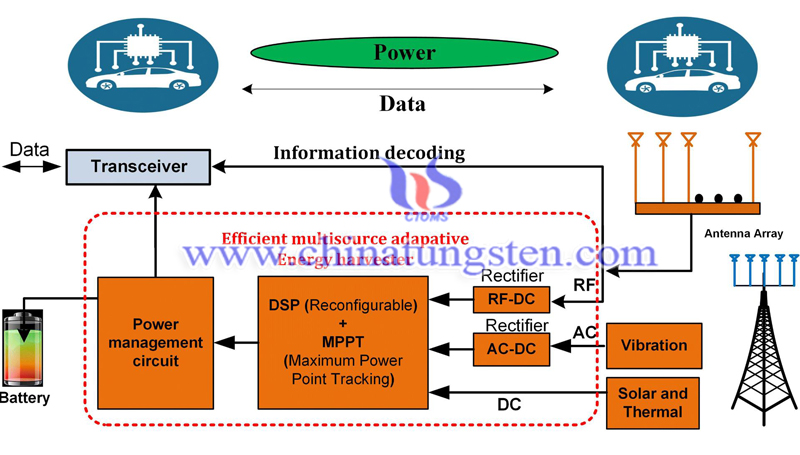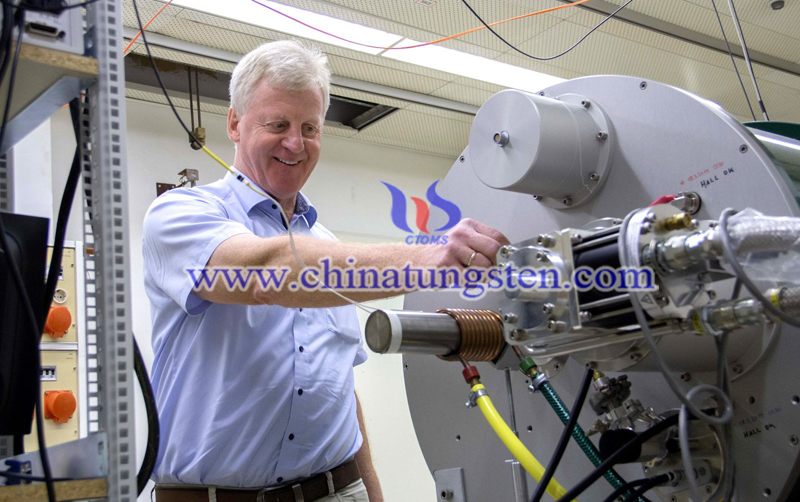Adding Tungsten, Aluminum, Iron, and Vanadium Layer to Silicon Generates Novel Material
- Details
- Category: Tungsten's News
- Published on Thursday, 21 November 2019 13:54
Through applying a thin layer of tungsten, aluminum, iron, and vanadium to a silicon crystal achieve a breakthrough in the performance of thermoelectric materials at a world record. Thermoelectric materials are capable of changing heat into electrical energy. This new type of material generates electrical current very efficiently from temperature differences, allowing sensors and small processors to supply themselves with energy wirelessly.

So far, the best thermoelectric figure of merit (ZT) of the conversion efficiency of the existing material is generally about 2.5 to 2.8. Researchers have currently succeeded in creating entirely new material at the Vienna University of Technology, whose ZT value ranges between 5 and 6. The higher the ZT value of a material, the better its thermoelectric properties. The material is a thin layer of aluminum, iron, tungsten, and vanadium applied to a silicon crystal.
"A good thermoelectric material must show a strong Seebeck effect, and it has to meet two important requirements that are difficult to reconcile," says Prof. Ernst Bauer from the Institute of Solid State Physics at TU Wien. "On the one hand, it should conduct electricity as well as possible; on the other hand, it should transport heat as poorly as possible. This is a challenge because electrical conductivity and thermal conductivity are usually closely related."
The thin layer consists of aluminum, iron, tungsten, and vanadium, applied to a silicon crystal has made the new material so effective that it could be used to provide energy for sensors or even small computer processors. The discovery has now been presented in the journal Nature.
Prof Bauer said that the atoms inside the material are the same distance from each other and are usually arranged in a strictly regular pattern. However, a thin layer of the material is applied to silicon crystal material, something wonderful occurs, the structure changes radically.

Although the structure of the atoms is still in a cubic arrangement, the distribution of different types of atoms is now arranged in a space-centered structure. This kind of regularity and irregularity changes the electronic structure makes the resistance of the material small, that is, the electrical conductivity is good, however, its irregular lattice structure hinders the propagation of heat.
According to Bauer, such a thin layer of power generation material made of iron, vanadium, tungsten, and aluminum to the silicon crystal material is space-saving and flexible and is very suitable as a power source for sensors and small electronic devices. The technology is very useful. If a factory needs a large number of sensors to be connected (In the "Internet of Things"), more and more devices are linked together online so that they automatically coordinate their behavior with each other. It is promising for future production plants to have these sensors with their own small thermoelectric power generation equipment.
- Tungsten Manufacturer & Supplier, Chinatungsten Online: www.chinatungsten.com
- Tungsten News & Prices of China Tungsten Industry Association: www.ctia.com.cn
- Molybdenum News & Price: news.molybdenum.com.cn
- Tel.: 86 592 5129696; Fax: 86 592 5129797; Email: sales@chinatungsten.com



 sales@chinatungsten.com
sales@chinatungsten.com